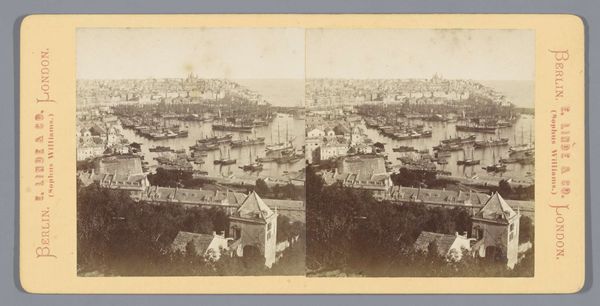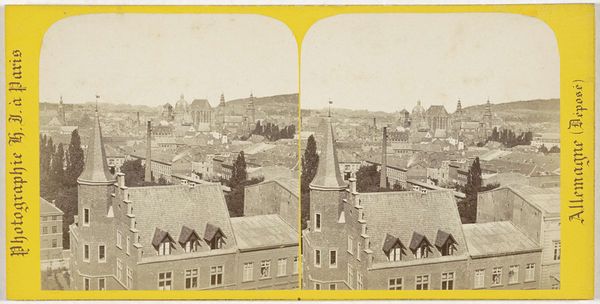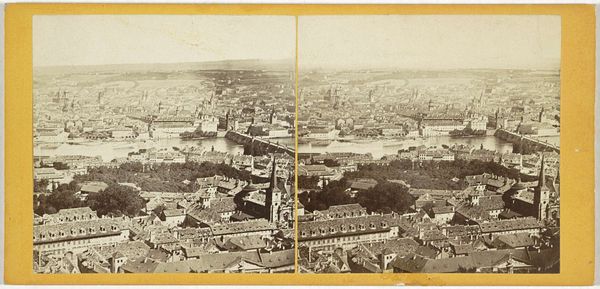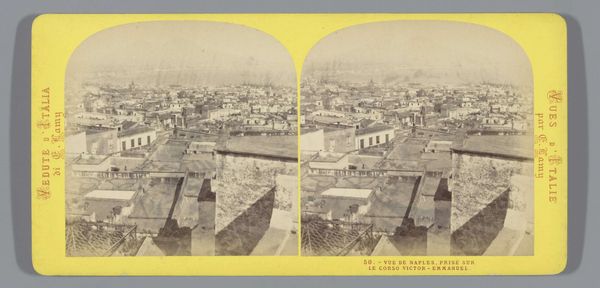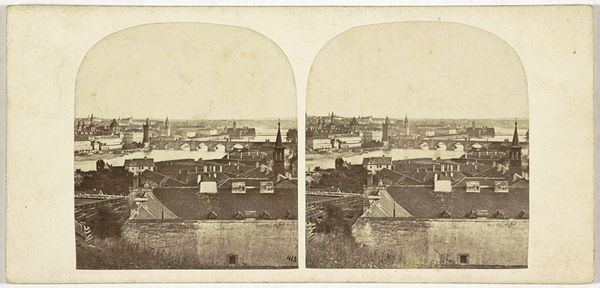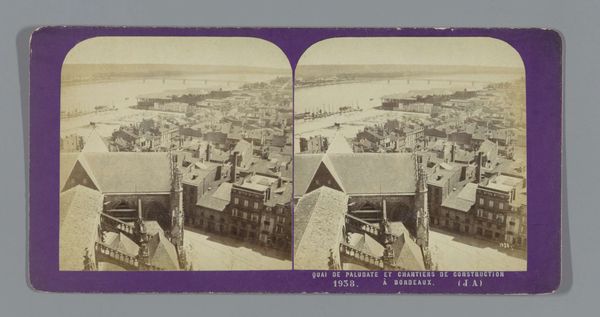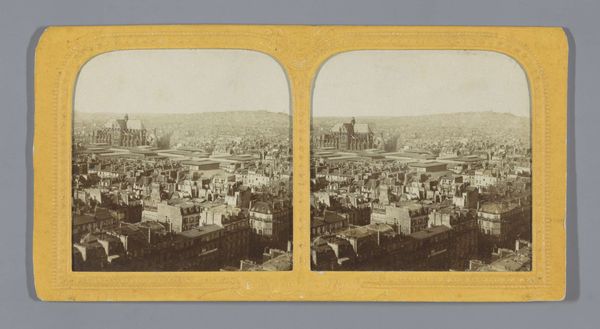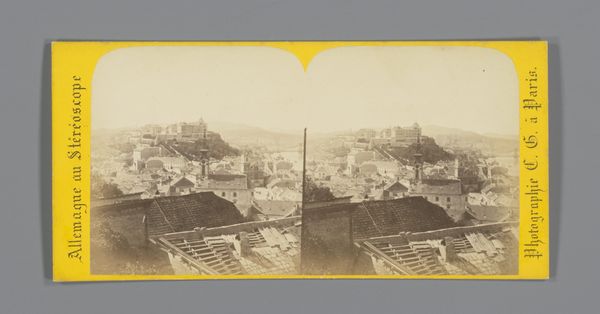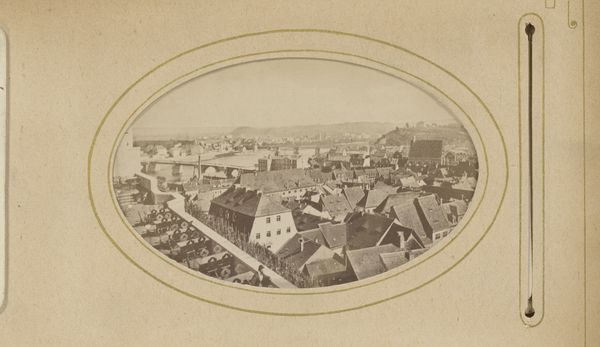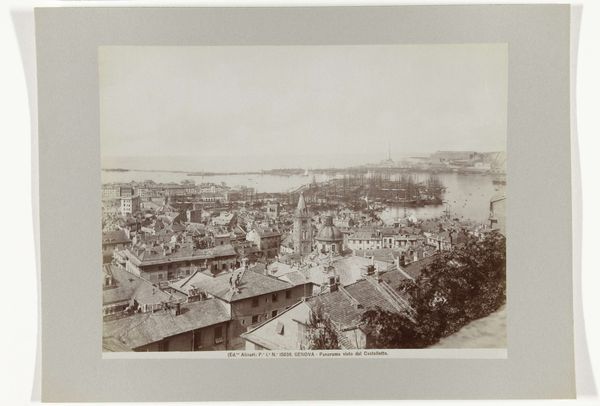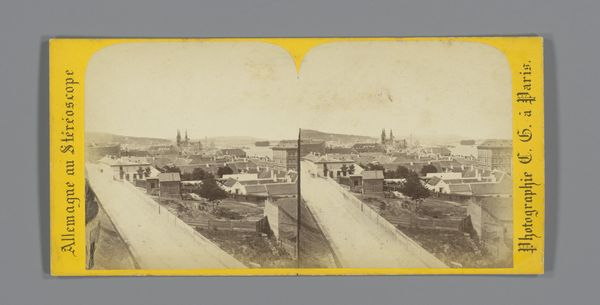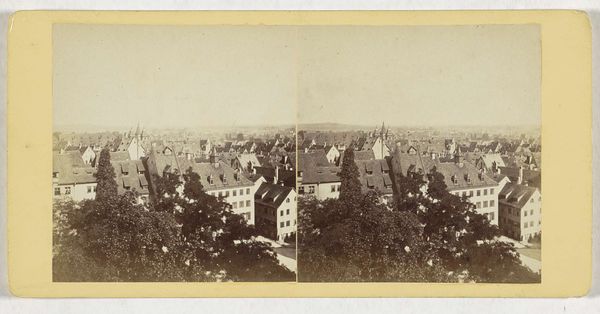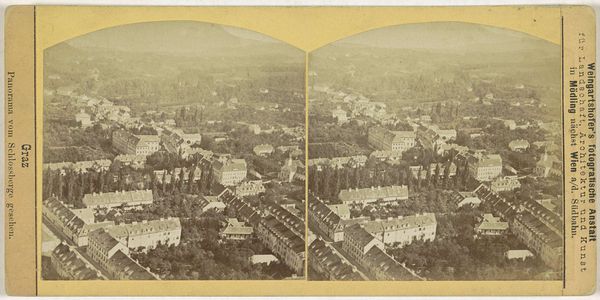
Dimensions: height 86 mm, width 176 mm
Copyright: Rijks Museum: Open Domain
Curator: Here we have an intriguing gelatin-silver print from between 1857 and 1863 entitled “Gezicht op Graz, gezien vanaf de Schlossberg,” or “View of Graz, Seen from the Schlossberg.” Editor: The texture! A sea of rooftops unfolding from this vantage point, almost overwhelming in their uniformity, punctuated by that striking tower. A little bleak, wouldn't you say? Curator: Bleak perhaps on a superficial level. But this cityscape speaks volumes about industrial expansion, a new type of gaze over cities being shaped by emergent power structures. This photograph documents Graz during a period of intense transformation—consider how rail infrastructure, barely visible in the mid-ground, connected rural communities to an emerging urban center. It evokes Romanticism in its vastness and, paradoxically, records a reality soon to alter irrevocably. Editor: The aerial perspective indeed gives a sense of control, dominance over the urban space, the repetitive nature of the roofs contributing to a sense of the mechanization and regularization of life... yet visually, what draws me in are the nuances. Look at the gradation of tones, almost like musical modulations of grayscale. The soft focus makes the forms seem to dissolve, resisting strict categorization. Curator: Indeed, the formal composition subtly challenges any perceived monotony, inviting a reading beyond a simple vista. These forms represent homes, institutions, places of labour, revealing socioeconomic structures as they literally build the environment. Understanding that informs our reading beyond sheer architectural photography. Who controlled this landscape, and whom did it exclude? Editor: The monochrome tones soften that power, universalizing the buildings. The light itself is subtly diffused and gives the roofs an almost sculptural, organic texture—opposing, in a sense, an imposed social or historical reading of them. Curator: Interesting—and valid—points about artistic interpretation, particularly of monochrome images. I think viewing it through the lens of power does not exclude admiring the beauty of its composition. Instead, it simply brings another layer of conversation to its historical and modern readings. Editor: Perhaps it underscores the limits of interpretation. Despite context, historical understanding, the image insists on itself, retaining a stubborn materiality and inviting aesthetic response above all else. A good place for both history and composition to meet, I would say.
Comments
No comments
Be the first to comment and join the conversation on the ultimate creative platform.
